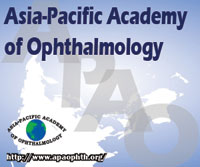APAO reflects on its inception, continues movementto remove barriers to ophthalmic education
Click Here to Manage Email Alerts
The Asia-Pacific Academy of Ophthalmology was formed from the dream of one man, William John Holmes, MD. Fifty-two years ago, Dr. Holmes, an ophthalmologist born in Budapest, Hungary, made a call to unite Asian leaders of ophthalmology. He had migrated to Hawaii and realized that eye surgeons in Asia, Australia and the Oceania region were faced with the same ophthalmological problems as their U.S. and European counterparts. It was Dr. Holmes’ dream that a regional organization be formed to foster closer relationships among ophthalmologists and ophthalmological societies in the Asia-Pacific region to combat preventable blindness.

Image: Lam DC
It was through the concerted efforts of various ophthalmological leaders, including Germiniano de Ocampo, MD, and Jesus Tamesis, MD, from the Philippines, and Robert F. Lowe, MD, from Australia, that the APAO was finally conceived. Together, they drew up the constitution of the Academy, paving the way for its first meeting in Manila, Philippines, on Oct. 10 to 13, 1960.
APAO now
Today, the APAO Congress serves as a platform to encourage exchange of ophthalmic knowledge and advancement of the standard of eye care. Since 2006, the APAO Congress has been an annual event that, on average, has attracted more than 4,500 ophthalmologists annually, making it one of the most popular ophthalmological meetings worldwide. With the 27th APAO Congress in Busan, South Korea, just around the corner, we are delighted to share our latest developments and a sneak peek into the scientific program.
An application program has been devised for the Congress. With the program, smartphone and tablet computer users can access and download a wealth of information about the meeting with just a few taps on the screen. More importantly, with the social networking site sharing function, one can easily connect with friends and colleagues to share information about the APAO Congress.
Highlights of the scientific program include a series of instruction courses. This year, the scientific program committee allowed submission of instruction courses for the first time, and there will be the new best free paper awards to be given to the best paper presentation in each free paper session.

Image: Lam DC
Technological advancements have certainly made the dissemination of ophthalmic knowledge a lot easier. The APAO was set up with the aim to promote prevention of blindness and restoration of sight through service, research and teaching in ophthalmology. To this end, it has recently launched its official journal, the Asia-Pacific Journal of Ophthalmology (APJO), to encourage research and publication in the Asia-Pacific region. Highlights of the upcoming March issue include an original study on diurnal IOP by Jost Jonas, MD, and colleagues; a review article on predictive factors at the optic nerve complex for glaucoma progression by Carlos De Moraes, MD, Robert Ritch, MD, and Jeffrey Liebmann, MD; and another review article on manual small-incision cataract surgery by Rengaraj Venkatesh, MD, David Chang, MD, et al. Based on the principle of “waste not, want not,” the APJO is filled with inspiring quotes and images. APJO readers will not only be equipped with ophthalmic knowledge that offers them a head start in their sight-saving campaigns, but also words of wisdom that guide them through the challenging lessons in life.
Most importantly, such knowledge is readily accessible online and free of charge. The only thing that is needed by readers of the APJO is access to the Internet. Not only do we help conserve valuable resources by running a purely electronic eye journal, but we also speed up the dissemination of information. With a click of the mouse, the messages we write can reach friends and colleagues who are miles apart in the blink of an eye. With another click of the mouse, the article that you are interested in will pop up right in front of your eyes. This was unimaginable when snail mail was the major mode of communication.
Online education program
Along this line, the next move of the APAO is to further enhance and enrich its online education program. Online members of the APAO will be able to access a wealth of quality information without incurring travel and accommodation expenses. While congresses are excellent meeting places for professional exchange of expertise, young ophthalmologists might not have sufficient resources to attend every important meeting worldwide.

Image: Lam DC
To cater to their needs, the APAO will start recording each scientific session of the 28th APAO Congress to be held in Hyderabad, India, in January 2013. While recordings can offer useful pointers for participants to self-evaluate their performance, quality talks and lectures will automatically go online to enrich the APAO education platform.
As the APAO has been entrusted with forming a family of ophthalmological societies for the welfare of all peoples and nations in the Asia-Pacific region since its inception, it is our vision and mission that we can contribute to the removal of the barriers to ophthalmic education, which will ultimately lead to a world where everyone can enjoy the right to sight. – by Dennis S.C. Lam, MD, FRCOphth, Secretary General of the APAO, Clement C.Y. Tham, FCRS, FCOphth, Deputy Secretary-General, and Frank J. Martin, AM, FRACS, FRANZCO, President of the APAO
